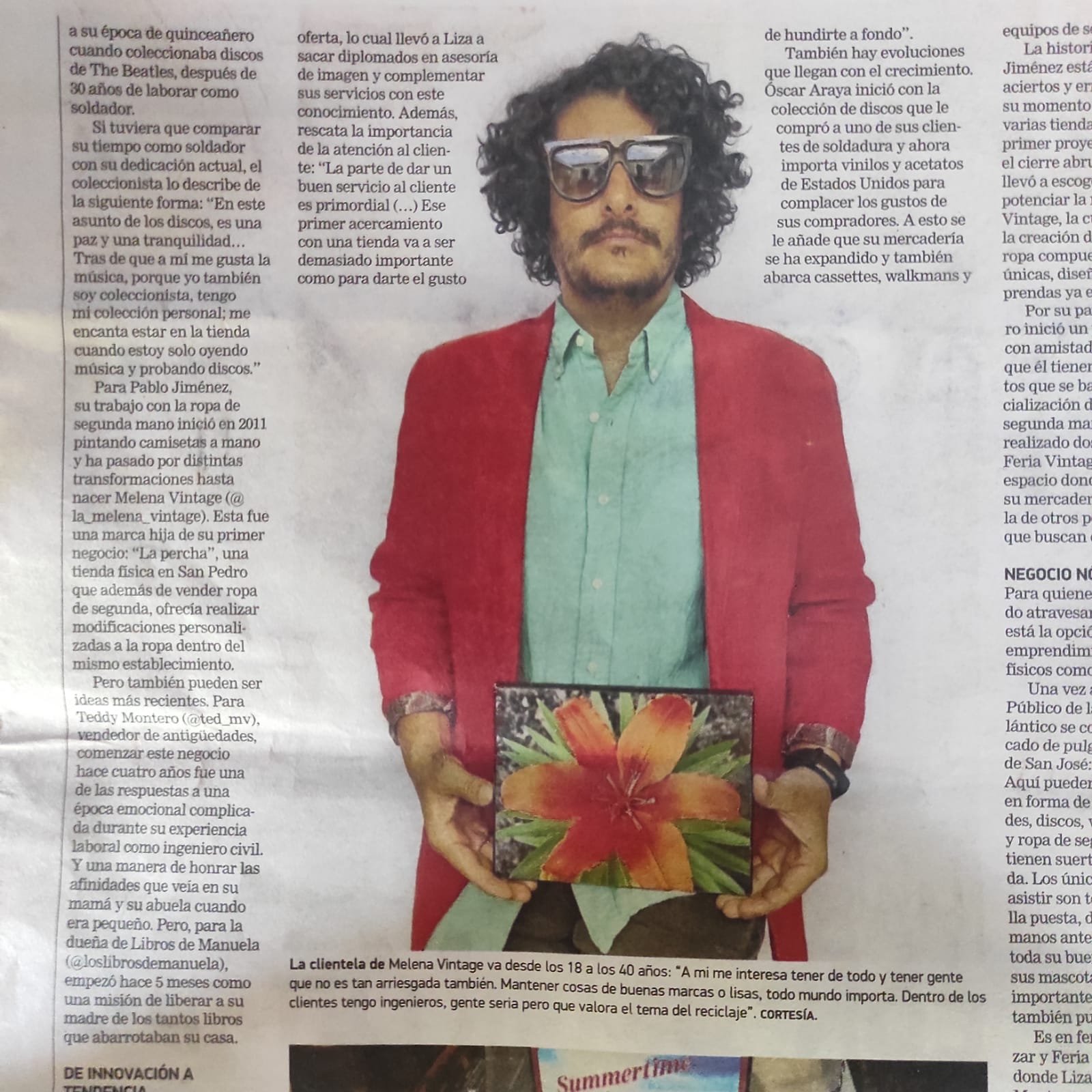INTERVIEW #40 LA MELENA VINTAGE
Based in: Costa Rica
Founded in: 2011 San Jose
Founded by: Pablo Jimenez
Store: lamelena.myshopify, shipping only in Costa Rica
Instagram: @lamelenavintage
Price range: $10-$100 USD
Why we love them: As a Scandinavian founded platform we just love to tell stories from the other side of the planet of people changing the way we look upon fashion and what is fashionable. La Melena truly have some supercool items, excellent job with sourcing and up-cycle/redesign their own products. We truly believe this concept changes and challenges the norms. We are happy to put Costa Rica on the map of countries we are exploring!
Welcome to A Sustainable Closet! Our first interview with sustainable fashion in Costa Rica. Can you please tell us why you started the vintage store La Melena?
Because, when I was young, I used to wear second-hand clothes, and the quality was always very good, so in 2011 I thought about creating a space where people could have access to quality clothes at an affordable price. I later understood the environmental impact of fast fashion, and I began not only to sell but also to recycle and redesign leftover garments to have a fully conscious business.
How do you choose your products you sell?
We buy them in Costa Rica, in American clothing stores. We buy, we select, we subtract and we wash.
How do you find the willingness of Costa Ricans to buy second hand?
I think that vintage in general worldwide is a cultural issue, in Central American countries second-hand clothes have always been seen as for the poor, very few people understand the value of buying second-hand clothes. But for some time now the landscape regarding vintage has changed and continues to change. People are becoming more and more aware.
Who is your typical customer?
My clients are mostly people between 18 and 35 years old, who like to dress differently and use unique and quality pieces.
What have been the main challenges with having your own second hand store?
The theme of culture, La Melena is also a brand that redesigns and uses second-hand clothes as raw material, so the challenges are that it is more difficult to design from unique pieces, than from new garment. If you design from new garments you only buy the same textile material and do a repetition, in this business repetition is not an option so we have to put in more work to every single item we create.
What is the biggest gain?
The greatest gain has been the value and acceptance that we give the work. It is what one does with love for art and love for the planet.
How would you describe greenwashing?
Greenwashing is when a company keep on doing the same thing, but disguised as green. I think that using the networks and explaining to clients what we really do is the first step, to question the rest, and to continue to support projects parallel to ours will generate conscious communities.
What advice would you give to consumers who want to create a more sustainable lifestyle?
The first thing I would advise on is to leave the circle of consumption, where you are anxious and and consume without thinking. Change the way you think about purchasing, stop buying for buying and buy quality that lasts over time. Have few but more significant pieces of clothing.
What is the best thing about having your own store?
The best thing about having a store is being part of the change, having new relationships, meeting people, and obviously achieving financial freedom.




